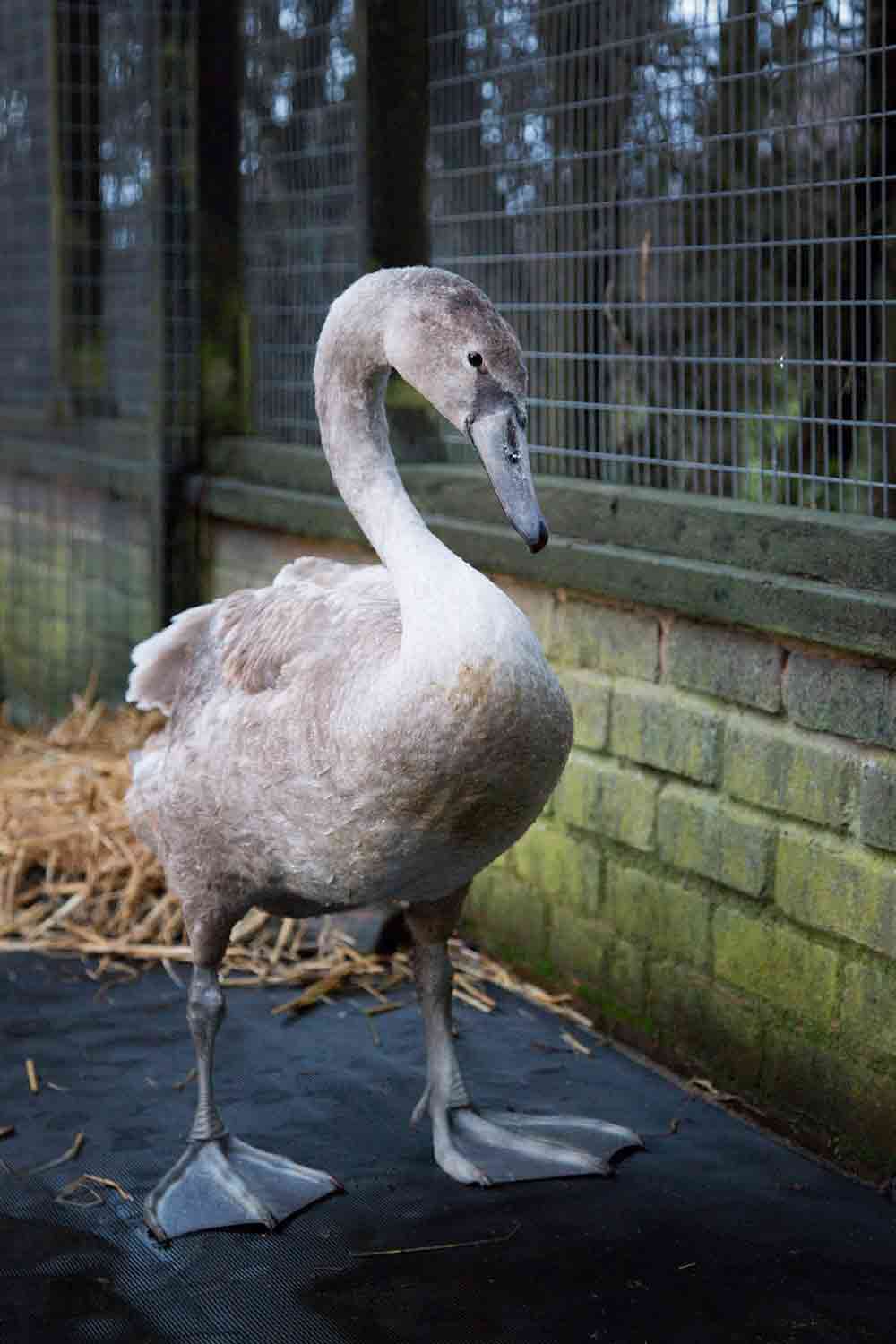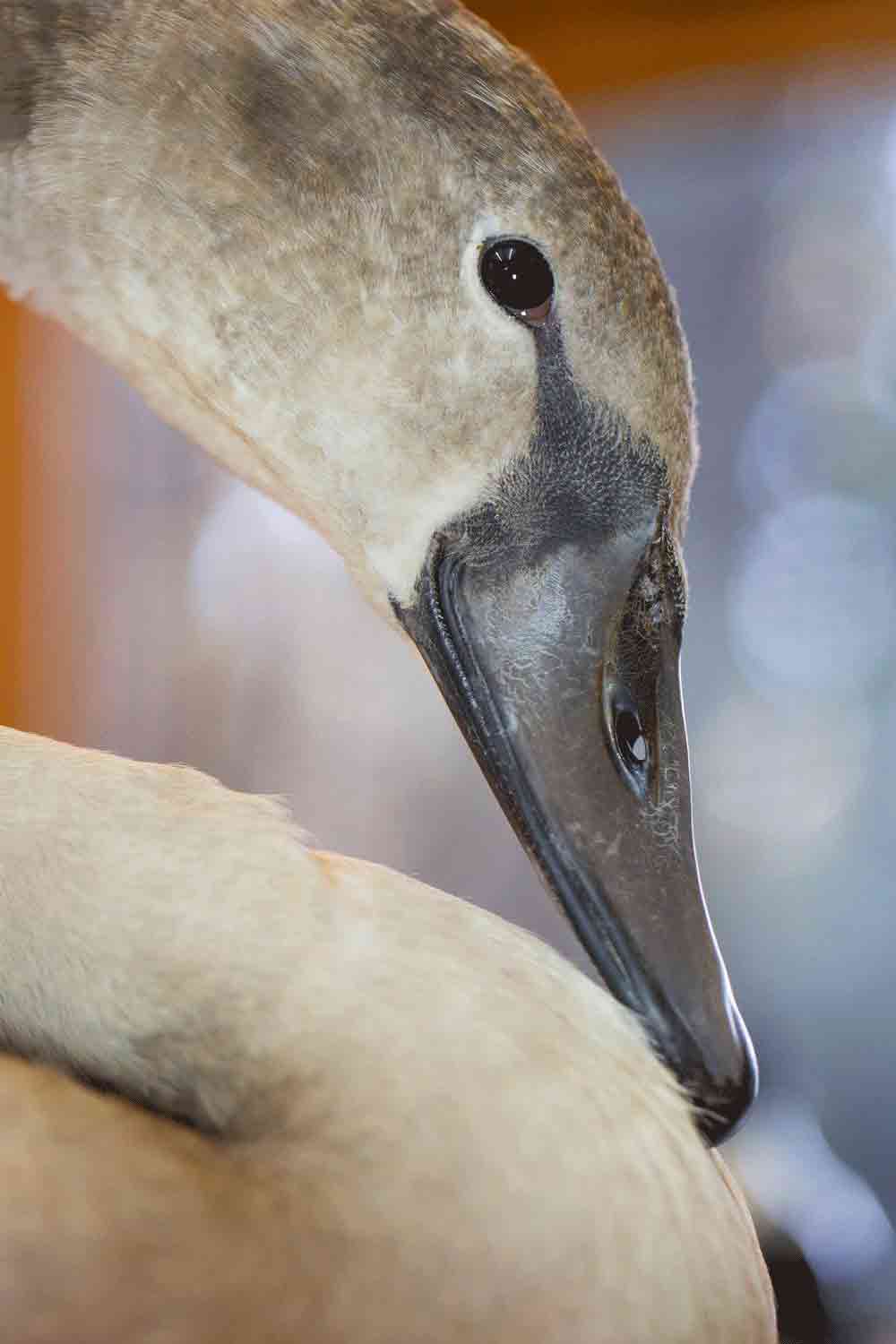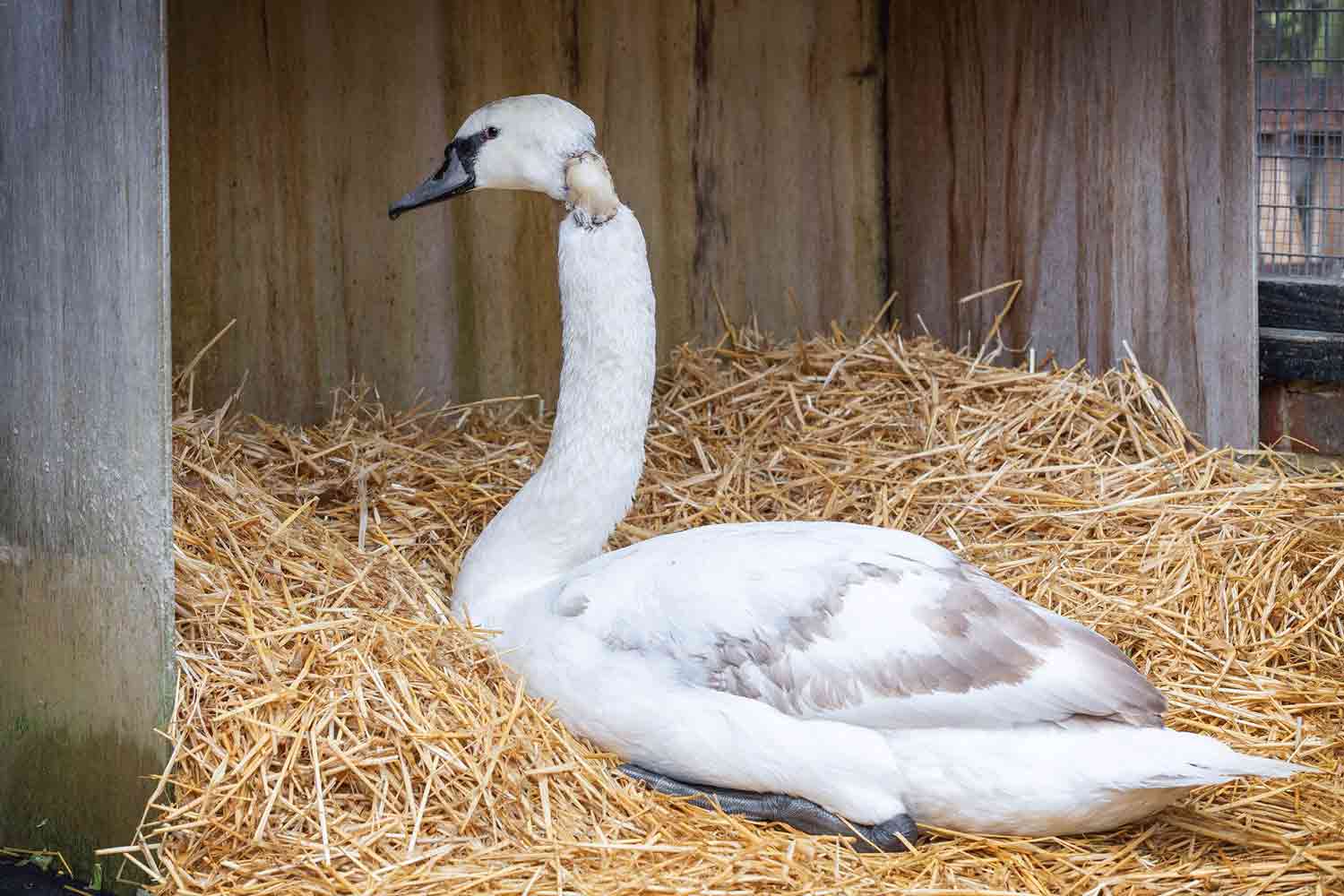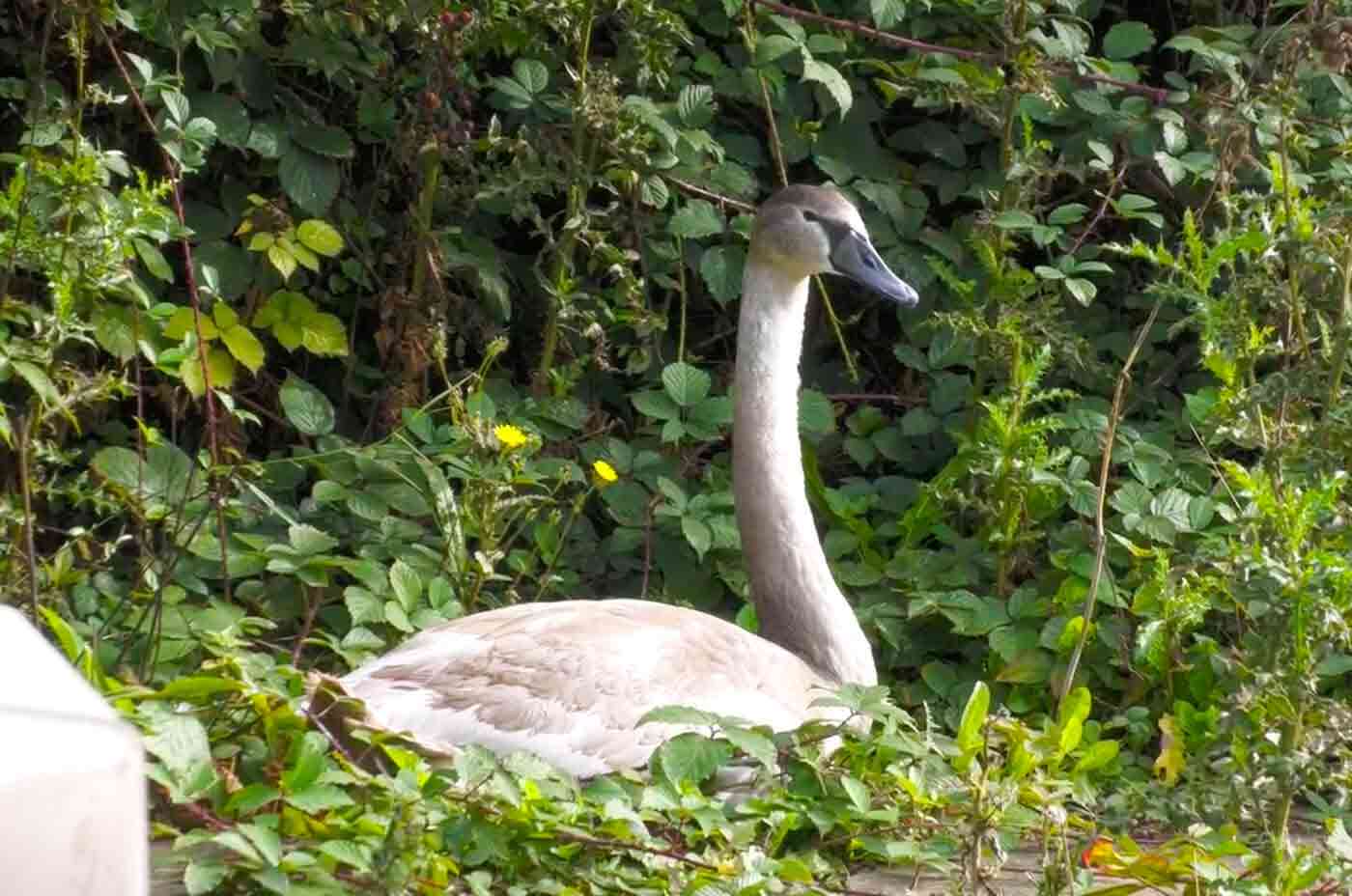Mute Swan
Life History
Length: 1.5m
Wingspan: 2.2m
Weight: 9-11.5kg
Diet: Herbivorous – aquatic vegetation, grains, corn, and insects like tadpoles and milfoil weevil.
Average Lifespan: 10 years
When to see them: All year round
UK population: est. 32000 individuals
UK conservation status: Green

About
The mute swan is one of UK’s most recognised water birds and the largest and heaviest in the British isles. Found along our rivers, in our local parks, and across wetlands, their all white body, long necks and graceful glide often see them associated with romance. But the swan is also a fierce parent, with the ability to do serious damage if you get between them and their young.
Its orange bill that has a large black ‘knob’ at the base, can be used to distinguish male and females, with the males being larger, of course. Females are known as a “pen” and a male, a “cob”. The young, known as cygnets, are born grey but gradually turn a mottled brown, it isn’t until they reach around a year old when their adult white feathers are fully developed.
Behaviour
Though swans are generally sociable, during breeding season this can dramatically change amongst both males and females. The males often puff up their feathers to make themselves appear larger in order to scare off predators and other swans. The males can also become aggressive towards their own young in order to encourage them to leave home.
Swans communicate using head movements, including for pair bonding, territorial disputes and greetings. As the name suggests, they are the least vocal of swans, but by no means mute, uttering short grunts and hisses. During the breeding season they make short, loud snorts. During flight the only sound is the beating of the wings, unlike other swan species that make honking calls.
They feed primarily by reaching below surface with their long neck, frequently upending, but will also dabble and graze on the land. Their favoured habitats include freshwater lakes, pools, reservoirs, gravel-pits, rivers, canals and park-lakes.


Their Threats
Though numbers are now rising and stable, in the 1970s swan numbers were drastically declining with one of the likely factors being lead poisoning caused by fishing weights.
Persecution: Sadly, swans are often victims of cruelty, we have taken in many swans that have been shot with catapults and lead pellets.
Entanglements: Fishing line and netting are common reasons for swans to be admitted into wildlife rescues.
Dog Attacks: Swans are often easy targets for dogs with strong prey drives.
Decline in nest sites: Swans are finding it increasingly difficult to find suitable nesting sites and food sources
How you can help
There are a number of simple ways you can help gulls:
- Remove any waste or fishing lines from common areas that swans inhabit
- Keep your dog on a lead around swans
- Encourage your local council to leave local park lakes for swans to nest
- Keep a note of a local wildlife rescue in case you find an injured or orphaned herring gull.
- Report any illegal persecution of gulls to the RSPB Investigations directly or alternatively report it to the RSPCA on 0300 1234 999
